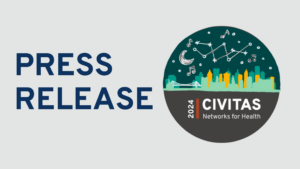Methodology
Methodology
Although recruitment efforts were reliant upon snowball and convenience sampling, the recruitment was purposeful based on our need to meet a diverse geographic sample. As there are many variations between the types of communities, including geography and setting, the sampling approach allowed for capturing and describing central themes that described the diversity of OSCTCs. The identified OSCTCs diversity characteristics included: weather-related climate, demographics of the community served, testing methodology, capacity for testing, type of medical center affiliation, and state/federal partnerships. The diversity amongst the data sample is a strong feature of the evaluation, as common patterns that emerged from the variation across coalitions captured the core experiences and overarching processes of OSCTCs.
This study was designed to follow-up on important themes and ideations brought forth from the results of a Phase I OSCTCs study conducted in March and April 2020. The interview guide outlined broad areas of knowledge relevant to the larger research questions of the first study, with developmental support provided by an epidemiologist and a qualitative researcher. Questions covered OSCTCs’ COVID-19 sample collection protocols, populations tested, supporting partnerships, reimbursement processes, as well as general successes, challenges, and recommendations for other OSCTCs.
Interviews were conducted via RingCentral online, and lasted between 30 and 60 minutes. All interviews were audio recorded and transcribed using New Dragon Professional 15 Individual dictation software for analysis purposes. To ensure confidentiality, only the research team had access to each interview and the identifiable interview information and recordings.
All interviews were initially coded utilizing oral coding via rapid identification of themes from audio recordings, and then were coded in NVivo for further refinement and thematic analysis. To ensure true reliability of the data, triangulation was achieved via cross-analysis utilizing the research team’s field notes, group coding sessions including peer debriefing and member checking, and analyzing the interview transcriptions. As no single data source can address multiple research aims, triangulation allows for the use of multiple data collection points to enhance the trustworthy quality of the data collection and analysis.
The quotes included in the Toolkit have been transcribed verbatim, directly from the audio files from the interviews. When necessary, purely for comprehension purposes, some grammatical editing was completed by the team. This includes the deletion of irrelevant information, small talk, and the blinding of specific names and places. Any added text to improve clarity is noted by [brackets].
Off-Site Testing Toolkit Navigation Menu
Off-Site COVID-19 Testing Project home page
– – –
Off-Site COVID-19 Testing Toolkit home page
1. Identify and prioritize the population to be tested
2. Identify and mobilize your partners
3. Determine the type of OSCTC
4. Offer the right type of test
5. Adapt to variations in laboratory capacity and turnaround time
6. Staff Required for OSCTC
7. Build efficiencies into your OSCTC
8. Promote positive patient experience and community awareness
9. Address potential patient access limitations
10. Manage patient results
11. Plan for weather extremes
12. Provide PPE to staff
13. Financial viability/ sustainability
14. Explore a broader role for your OSCTC
Methodology
Additional Resources
Acknowledgements


